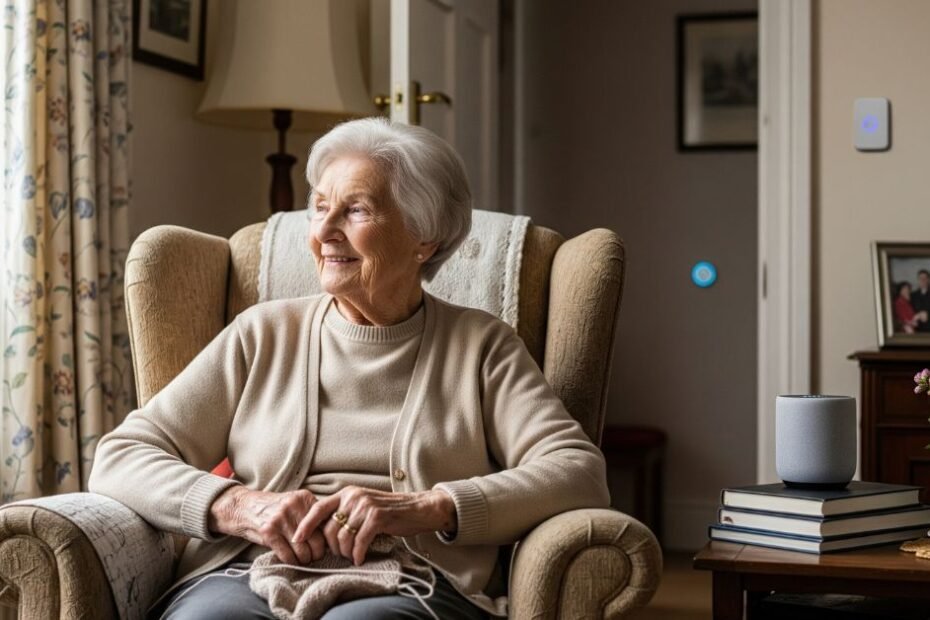Caring for aging loved ones is a top priority—but when they live alone, worry naturally increases. How do you guarantee their safety and well-being without compromising independence or privacy? The answer lies in smart technology for elderly care. Today’s devices provide discreet, affordable, and practical ways to support seniors while allowing them to maintain dignity and autonomy.
1. Why Technology Is a Key Ally in Senior Care
Technology is no longer complicated or inaccessible. It has become a powerful ally for families who want peace of mind while ensuring independence for older adults. The goal is not surveillance but creating a smart safety net that activates only when necessary.
1.1 The Role of Autonomy and Dignity
Respecting seniors’ autonomy isn’t just ethical—it’s vital for their mental and emotional health. According to gerontologists, independence is directly linked to quality of life in older age. Technology should empower seniors, not confine them. The right tools offer support without making them feel constantly watched.
2. Smart Solutions to Support Seniors Living Alone
The U.S. market offers a wide range of elderly care technology—from affordable sensors to advanced wearables. Below are some of the most effective solutions, with examples you can explore today.
2.1 Discreet Motion and Door Sensors
These sensors don’t record images; they only detect activity, preserving privacy.
-
Motion Sensors: Installed in hallways, bedrooms, or bathrooms, they send alerts if no movement is detected for a set time—potentially signaling a problem.
-
Door/Window Sensors: Notify families if a door opens at unusual hours, such as late at night.
In the U.S., brands like Ring, SimpliSafe, and Wyze offer affordable motion and door sensors, starting around $20–$40 each.
2.2 Voice Assistants & Emergency Call Devices
Smart speakers and emergency tools ensure fast communication in critical moments.
-
Smart Speakers (Amazon Echo, Google Nest): Beyond playing music, they can set medication reminders, schedule appointments, or call pre-set contacts by voice command.
-
SOS Buttons or Pendants: Worn as necklaces or wristbands, these devices allow seniors to trigger an emergency alert with one touch. Many include GPS tracking.
In the U.S., Life Alert, Aloe Care Health, and Amazon Alexa Together are popular solutions.
2.3 Privacy-Focused Smart Cameras
When video monitoring is necessary, privacy should come first.
-
Two-Way Audio Cameras: Let families check in and talk with seniors when needed. Some models allow “privacy zones” or remote shut-off.
-
Smart Doorbells: Allow seniors to see and speak with visitors without opening the door.
Options include Arlo, Eufy, and Ring cameras, priced between $50–$200.
2.4 Wearables for Health & Safety
Smartwatches and fitness bands go beyond step counting. Many now include fall detection, heart monitoring, and one-tap emergency calls.
-
Affordable Options: Fitbit Inspire, Wyze Band
-
Advanced Models: Apple Watch (with fall detection + ECG), Samsung Galaxy Watch
Prices range from $50 for basic bands to $400+ for advanced smartwatches.
3. How to Introduce Technology Without Resistance
Technology adoption works best when approached with empathy and patience.
3.1 Open Conversations First
Before installing any device, talk openly with your loved one. Explain how the tools improve safety and independence, and emphasize that they are not meant to take away privacy.
According to the American Geriatrics Society, consent and communication are essential when introducing tech solutions for seniors.
3.2 Gradual Implementation & Ongoing Support
Start with simple, non-intrusive devices—like voice assistants or motion sensors. Once the senior feels comfortable, expand to wearables or cameras if needed.
Practical example:
-
Begin with: “Alexa, remind me to take my medicine.”
-
Later: Add wearable with fall detection for extra safety.
4. Where to Find Reliable Guidance
Implementing elderly care technology works best with professional support.
-
Healthcare Professionals: Geriatricians, nurses, and physical therapists can advise on the right tech for health conditions.
-
Specialized Companies: Look for senior-friendly home automation and monitoring services.
-
Trusted Associations: The American Association of Retired Persons (AARP) and the National Institute on Aging (NIA) provide research, guides, and resources on aging and technology.
Conclusion: Technology as a Bridge of Love and Safety
Smart technology for elderly care is more than convenience—it’s a way of showing love and responsibility while protecting independence. These tools don’t replace presence or affection, but they enhance peace of mind for both seniors and their families.
Now is the perfect time to explore these solutions. Start small, respect autonomy, and build a safer, more independent routine for your loved ones.
Ready to take the first step? Explore affordable smart devices today and bring more peace to your family.
